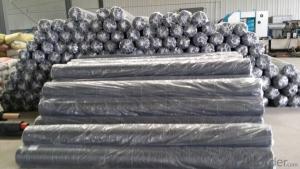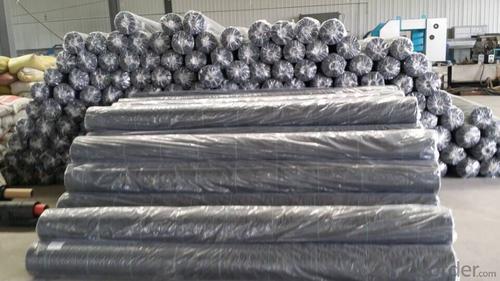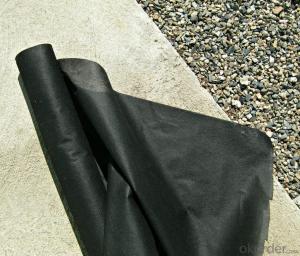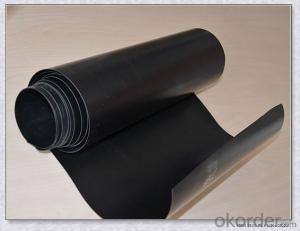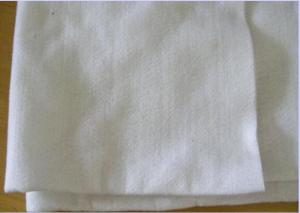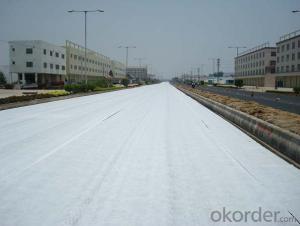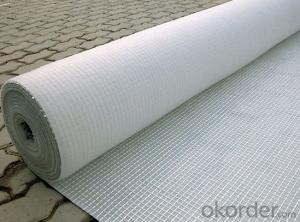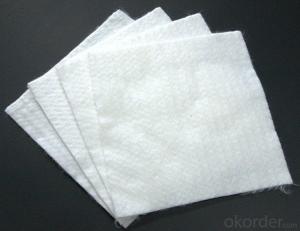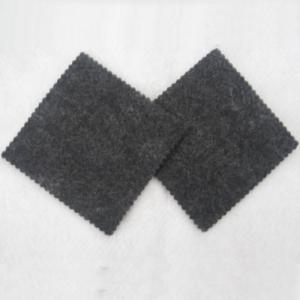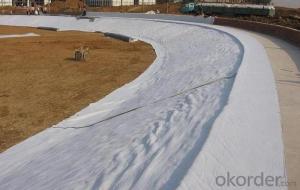Geotextile Slope Stabilization Groundcover Fabric for Agriculture, Landscape, and Weed Control
- Loading Port:
- China main port
- Payment Terms:
- TT OR LC
- Min Order Qty:
- 5000 m²
- Supply Capability:
- 1000000 m²/month
OKorder Service Pledge
OKorder Financial Service
You Might Also Like
Introduction
Geotextiles are composed from synthetic polypropylene/polyester fibres through a mechanical process of needling the fabric and adding, when necessary, a thermo fused process, resulting in a uniform porous structure with excellent tensile strength and chemical deterioration.
Type: 1. Wovens & knitted: use various fibre types in different combinations.
2. Non-wovens: staple or continuous fibres that are heat treated or needlepunched to “fix” fibres relative to each other.
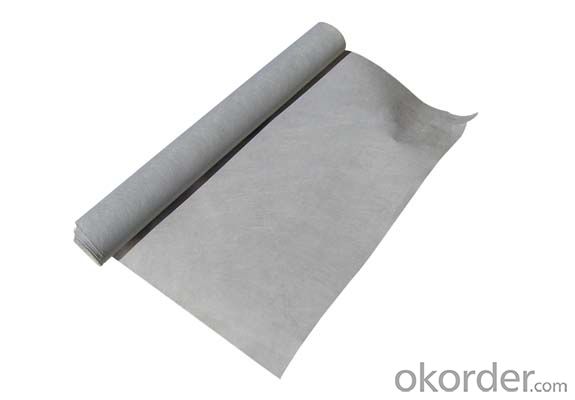
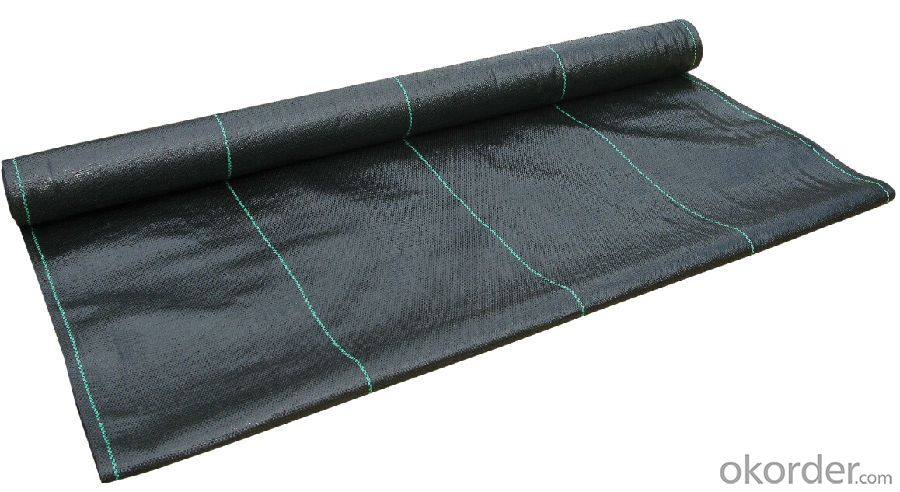
Specification
1) Weight / Mass: 75g/m2-400g/m2 .
2) Width: Within 8 m (1m-8m)
3) Length: 50m-100m/roll (as request)
4) Material: PP
5) Color: Black , white , grey, others
6) The biggest geotextile manufacturer/factory in China for many years . The equipment is introduced from Germany.
7) This geotextile can be made of polypropylene (PP).
8) The mass is available from 75g/m2 to 400g/m2 and the width available from 1.0m-8m, monolayer or multilayer (reinforcement geotextiles), long fiber or short fiber.
9) Color: all kinds of color are available. The annual production ability is 10 million square meters.
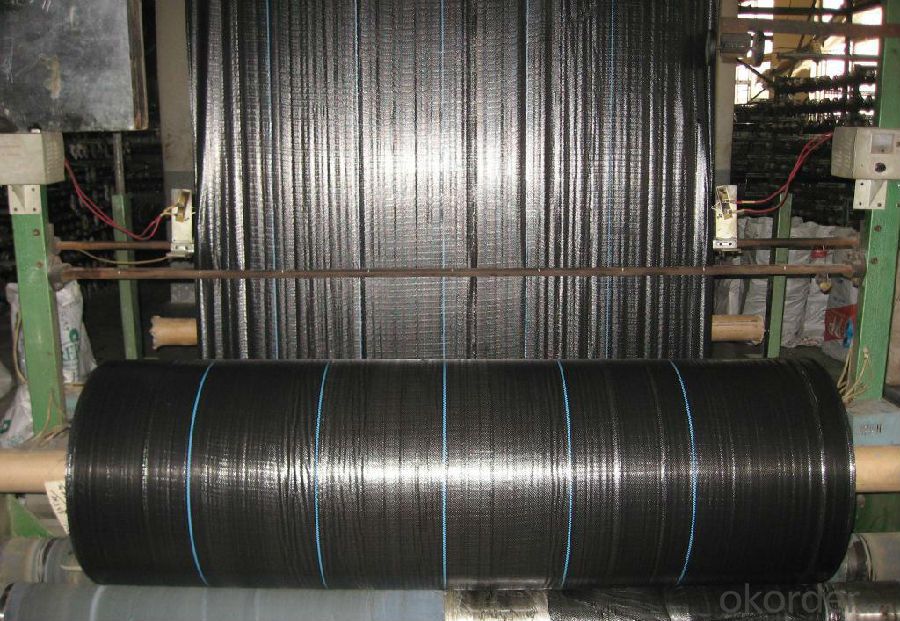
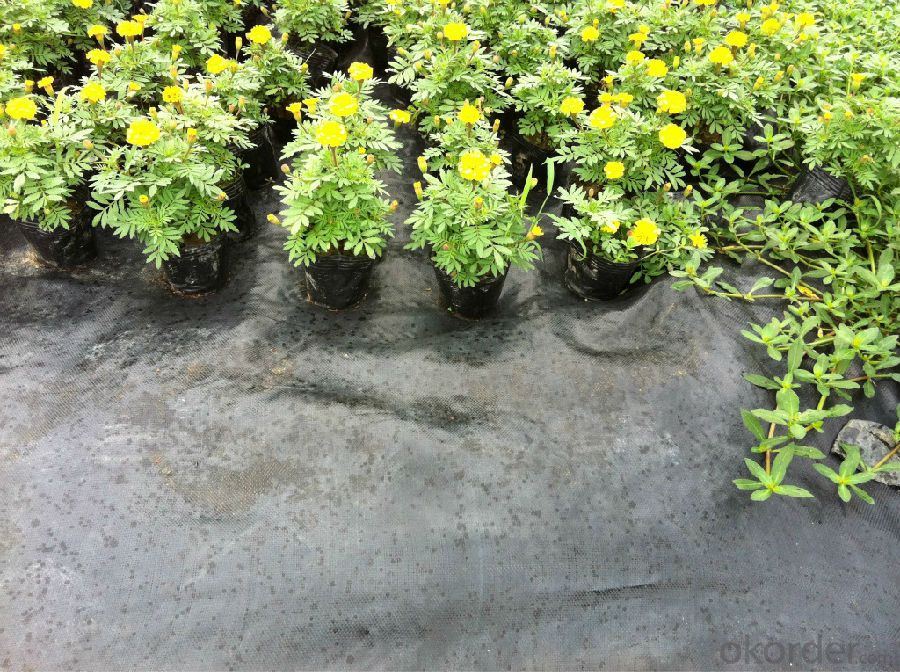
Application
1) Filtration
The filtration layer of the dykes, river canal, seacoast, concrete slope, retaining walls. At the same time of preventing the clay granule from passing, it allows the water and the gas pass through freely.
2) Separation:
The isolation of the railway dregs and the roadbed, roadbed and the soft base, surface of the airdrome and parking lot and the groundsill, different dam materials. It isolates the soil and the gravel of two kinds different granule pathway from the groundsill or other buildings.
3 )Reinforcement:
The highway, railway, soil-stone dam, breakwater, airport, backfill soil of retaining wall, slope protection, etc in which distributes the earth stress, prevents the side-displacement of the earth body and improves the earth body stability.
4 )Protection
It prevents the bank from being washed out, protects the bank and the bottom, prevents the water and soil from being washed away.
FAQ:
Q1: What is your minimum order quantity?
A:The minimum order quantity is 5000 ,but it is negotiable.
Q2:What is your payment terms?
A: T/T,Western Union,Paypal,L/C...
Q3:What is your delivery time?
A:Production time usually costs 2-20 days.
Waiting to cooperate with you!
- Q: Stone cage slope is the first gravel or the first shop geotextile
- Hello, the first shop geotextile, put the cage on top, into the stone seal can be. We are Dongrun stone cage factory hope to help you.
- Q: Fish tank white filter cotton toxic, is not geotextile, or non-woven Yeah
- Geotextile do fish tank filter, fish will die
- Q: How do geotextiles affect construction site safety?
- Geotextiles play a crucial role in enhancing construction site safety by providing erosion control, stabilizing soil, and improving drainage. These materials prevent soil erosion, thereby reducing the risk of landslides and slope failures. Geotextiles also reinforce soil and act as a barrier against contaminants, ensuring the stability of infrastructure and preventing environmental hazards. Furthermore, they facilitate proper water drainage, preventing water buildup and reducing the risk of accidents or damage to structures. Overall, geotextiles significantly contribute to construction site safety by mitigating risks associated with soil erosion, stability, and water management.
- Q: Can geotextiles be used in geotechnical engineering projects?
- Yes, geotextiles can be used in geotechnical engineering projects. Geotextiles are permeable fabrics that are commonly used to enhance the performance and stability of soil in various geotechnical applications, such as erosion control, soil stabilization, drainage systems, and reinforcement of weak soils. They can improve the overall strength and durability of the soil, prevent erosion, and provide filtration and drainage capabilities.
- Q: GB / T-2008 has this standard on staple geotextile? What is the exact name? Know what to say thank you!
- There is the national standard, full name "staple acupuncture non-woven geotextile"
- Q: How do geotextiles contribute to the efficiency of drainage systems?
- Geotextiles contribute to the efficiency of drainage systems by providing two main benefits. First, they act as a filter to prevent soil particles from clogging the drainage pipes or systems, allowing for a consistent flow of water. Second, they help to distribute the water evenly across the entire drainage area, improving the overall effectiveness of the system.
- Q: How do geotextiles help in preventing clogging of drainage systems?
- Geotextiles help prevent clogging of drainage systems by acting as a filter, allowing water to pass through while preventing the entry of fine particles and debris that could potentially clog the system.
- Q: What are the environmental benefits of using geotextiles?
- Geotextiles offer several environmental benefits, including erosion control, soil stabilization, and improved water quality. They prevent soil erosion by reinforcing and stabilizing slopes, reducing the risk of landslides and sediment runoff into water bodies. Geotextiles also promote vegetation growth by retaining moisture and nutrients in the soil, aiding in reforestation and ecological restoration efforts. Additionally, they can filter contaminants from stormwater runoff, improving water quality and protecting aquatic ecosystems. Overall, geotextiles provide sustainable solutions for various environmental challenges.
- Q: What are the design considerations for geotextile-reinforced slopes?
- Some key design considerations for geotextile-reinforced slopes include selecting the appropriate type and strength of geotextile, considering the slope angle and height, evaluating the soil conditions and stability, determining the required length and spacing of reinforcement layers, ensuring proper installation and quality control, and accounting for factors such as water drainage and vegetation establishment. Additionally, the design should consider the long-term durability and maintenance requirements of the reinforced slope.
- Q: Are geotextiles environmentally friendly?
- Yes, geotextiles can be considered environmentally friendly. They are typically made from synthetic materials such as polyester or polypropylene, which are non-biodegradable. However, geotextiles offer various environmental benefits such as erosion control, soil stabilization, and water filtration. They help prevent soil erosion, reduce sedimentation in water bodies, and improve overall water quality. Additionally, geotextiles can be recycled and reused, further minimizing their environmental impact.
Send your message to us
Geotextile Slope Stabilization Groundcover Fabric for Agriculture, Landscape, and Weed Control
- Loading Port:
- China main port
- Payment Terms:
- TT OR LC
- Min Order Qty:
- 5000 m²
- Supply Capability:
- 1000000 m²/month
OKorder Service Pledge
OKorder Financial Service
Similar products
Hot products
Hot Searches
Related keywords
